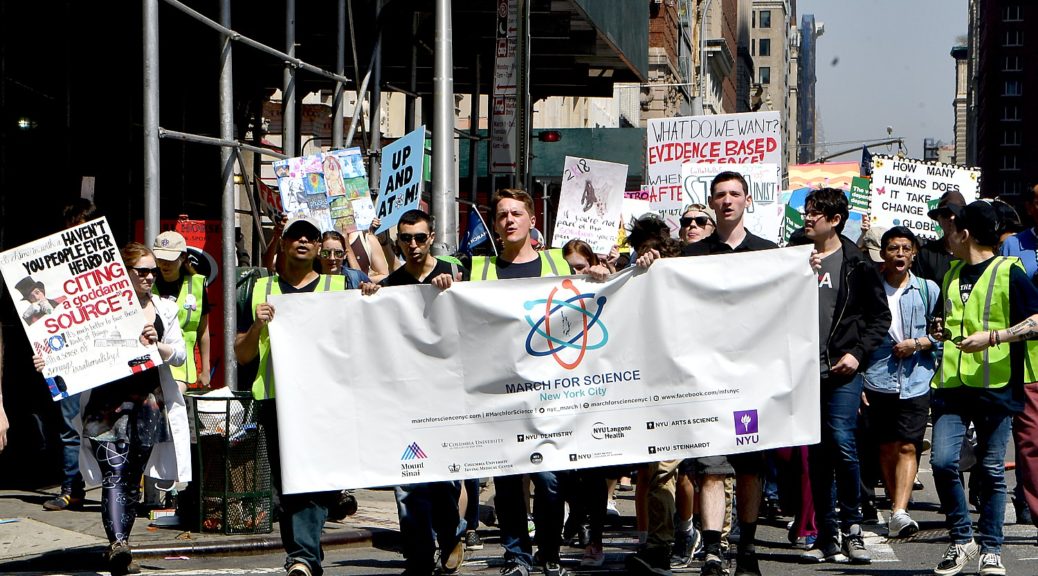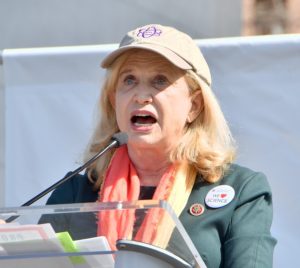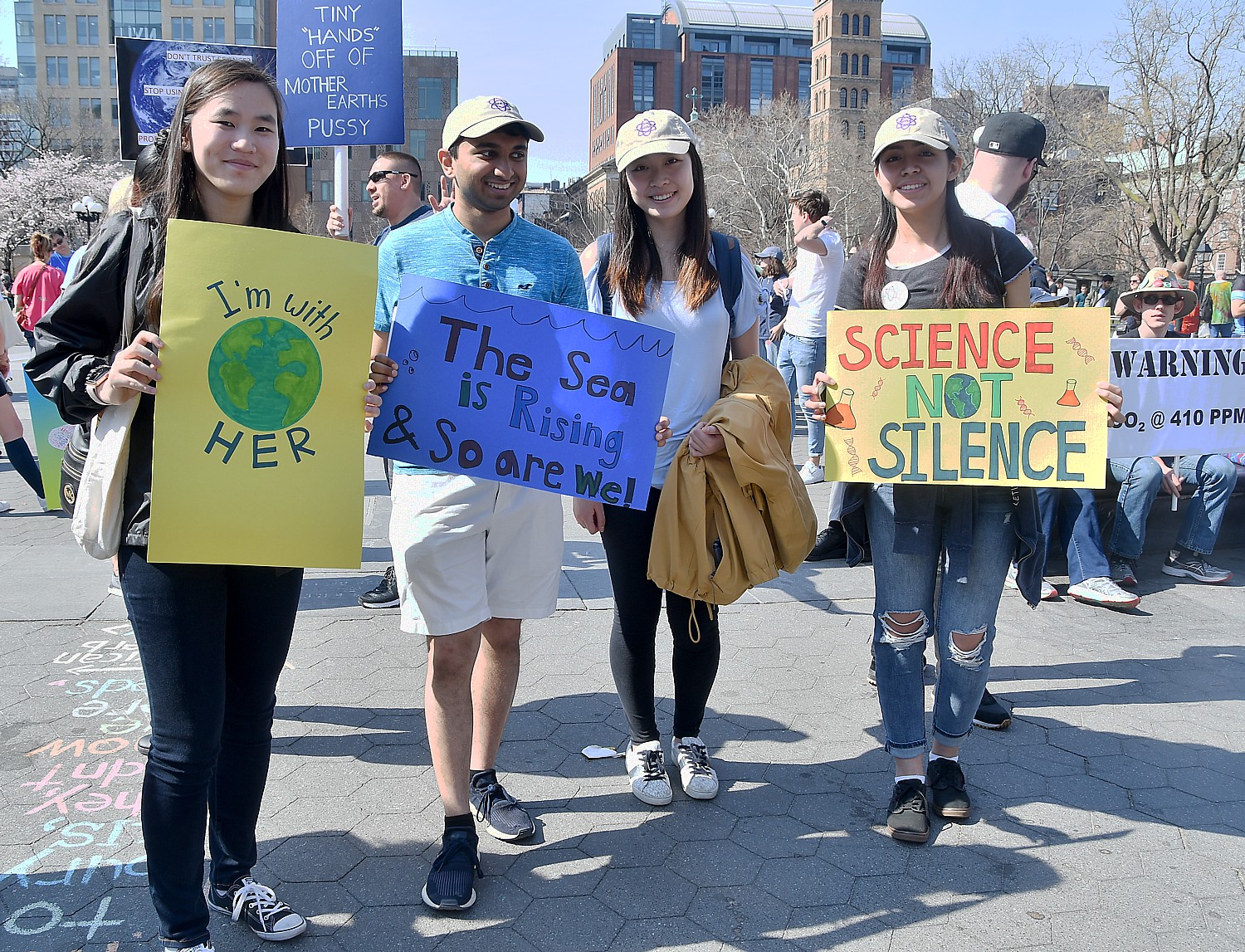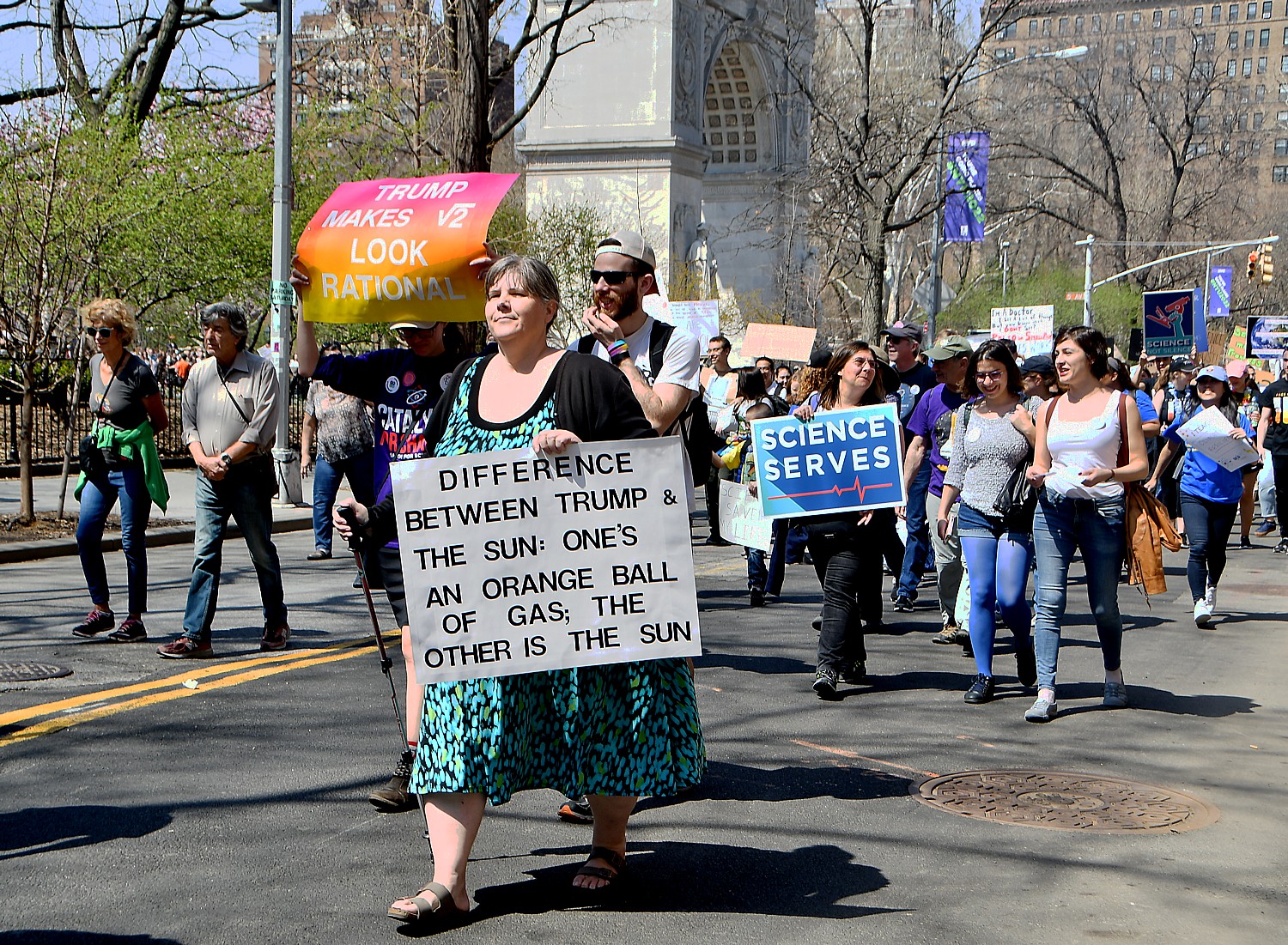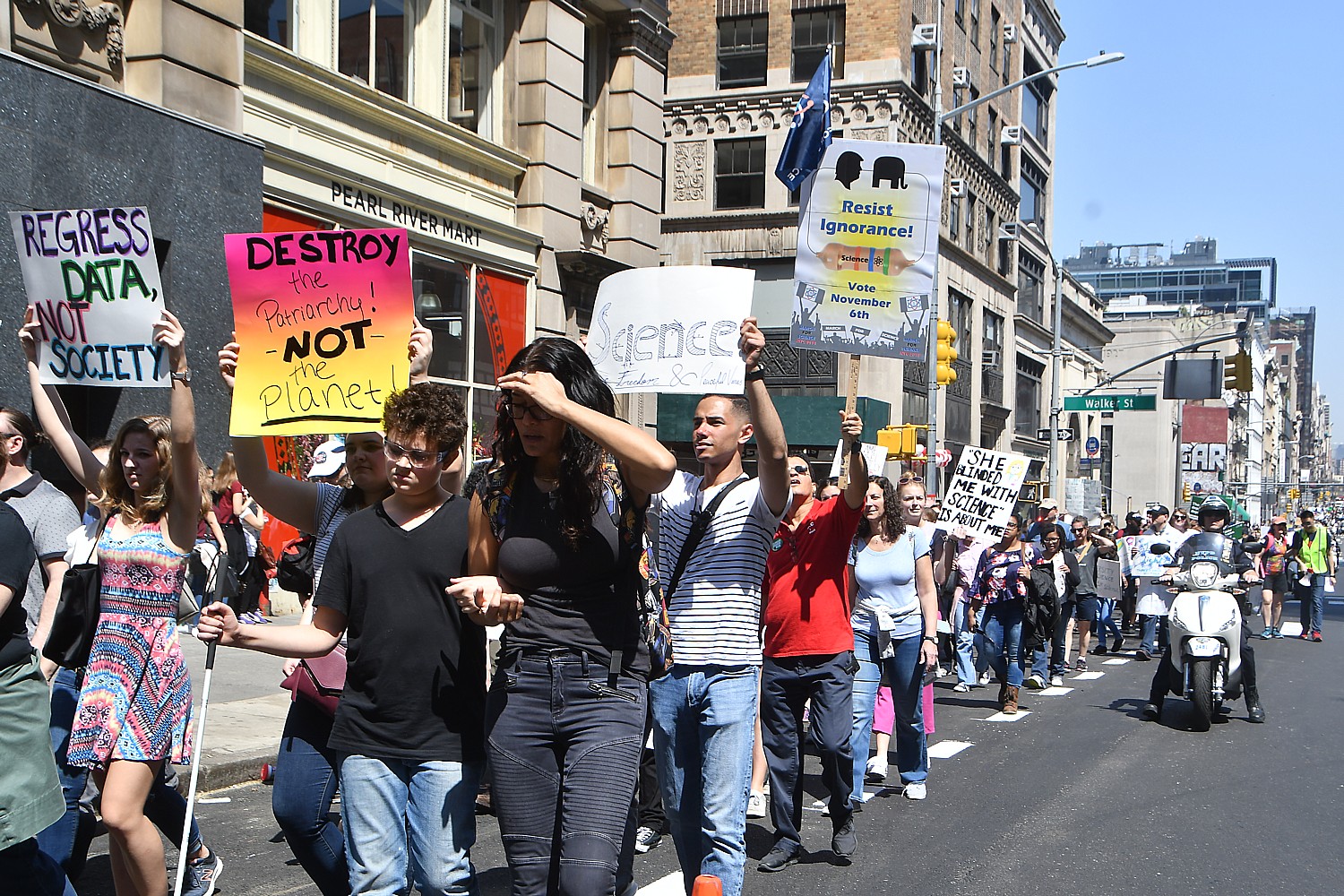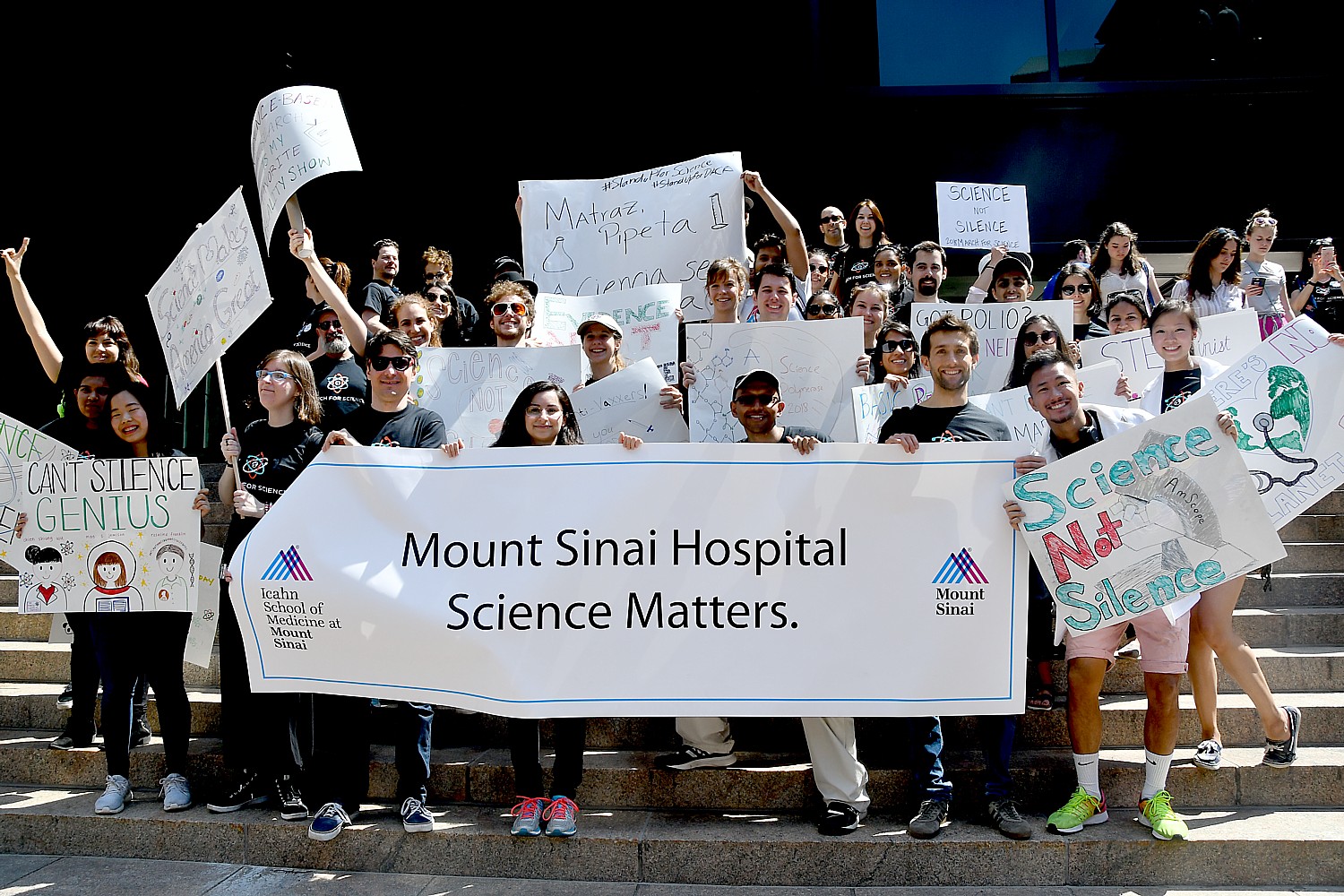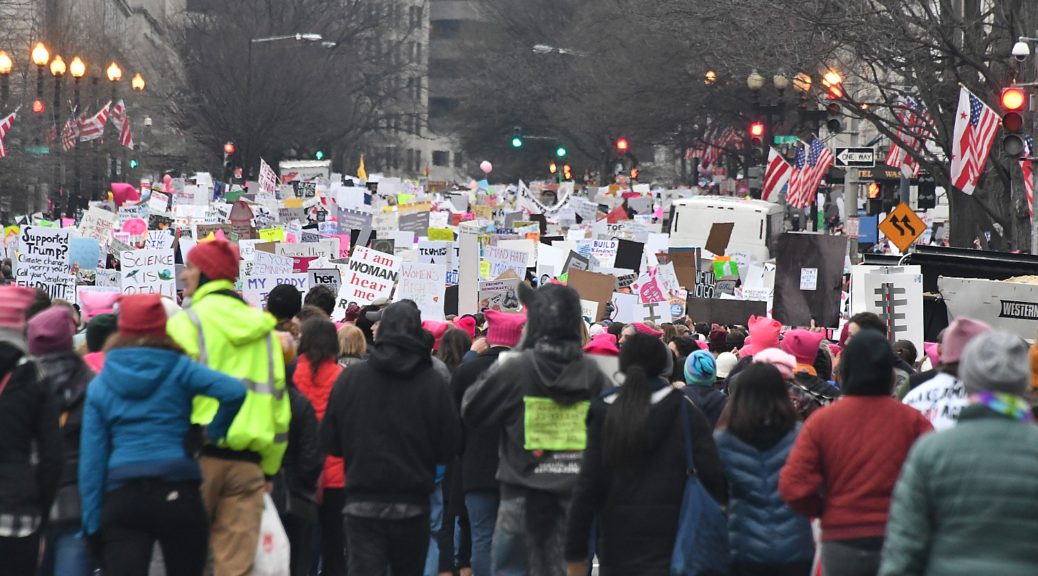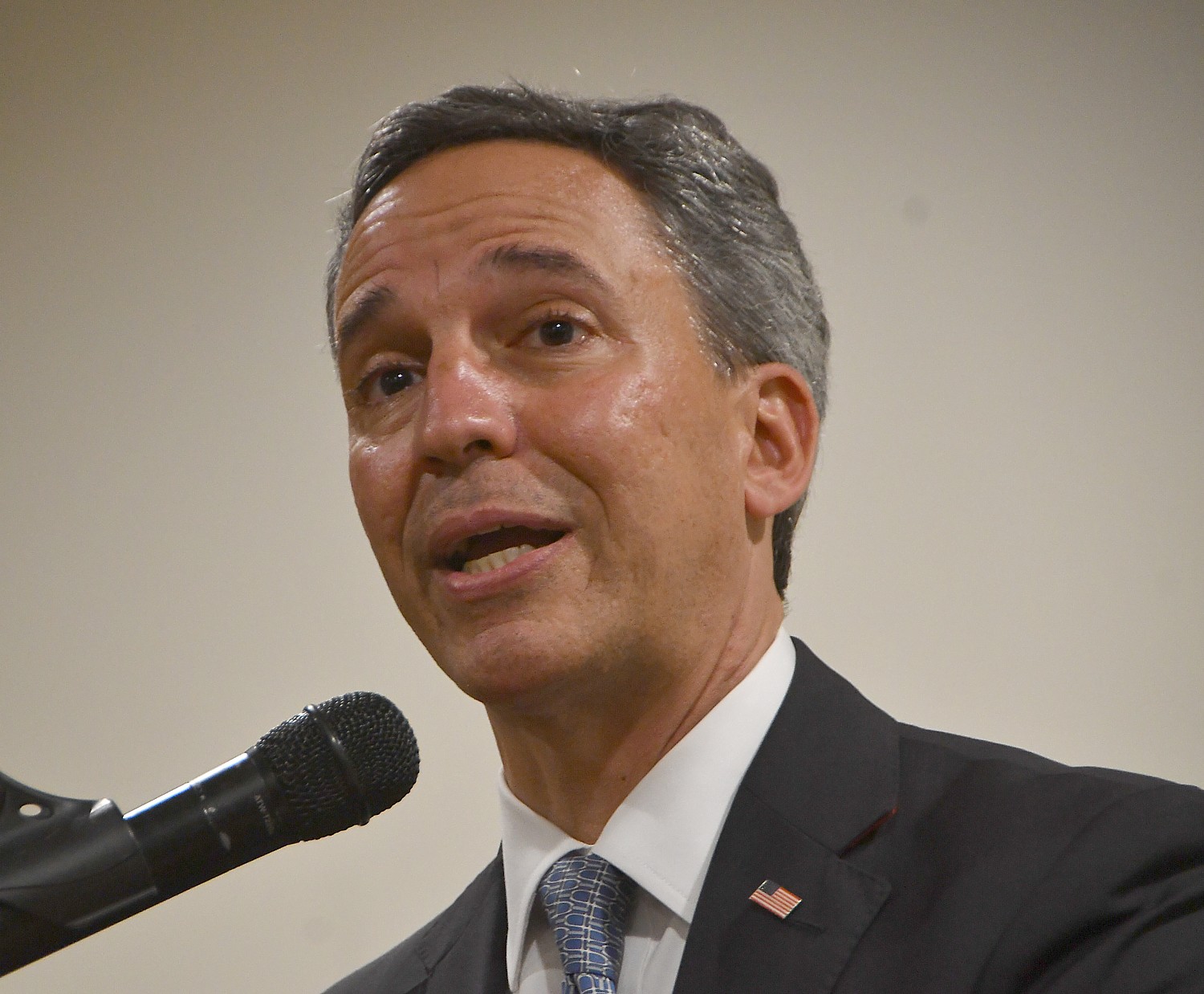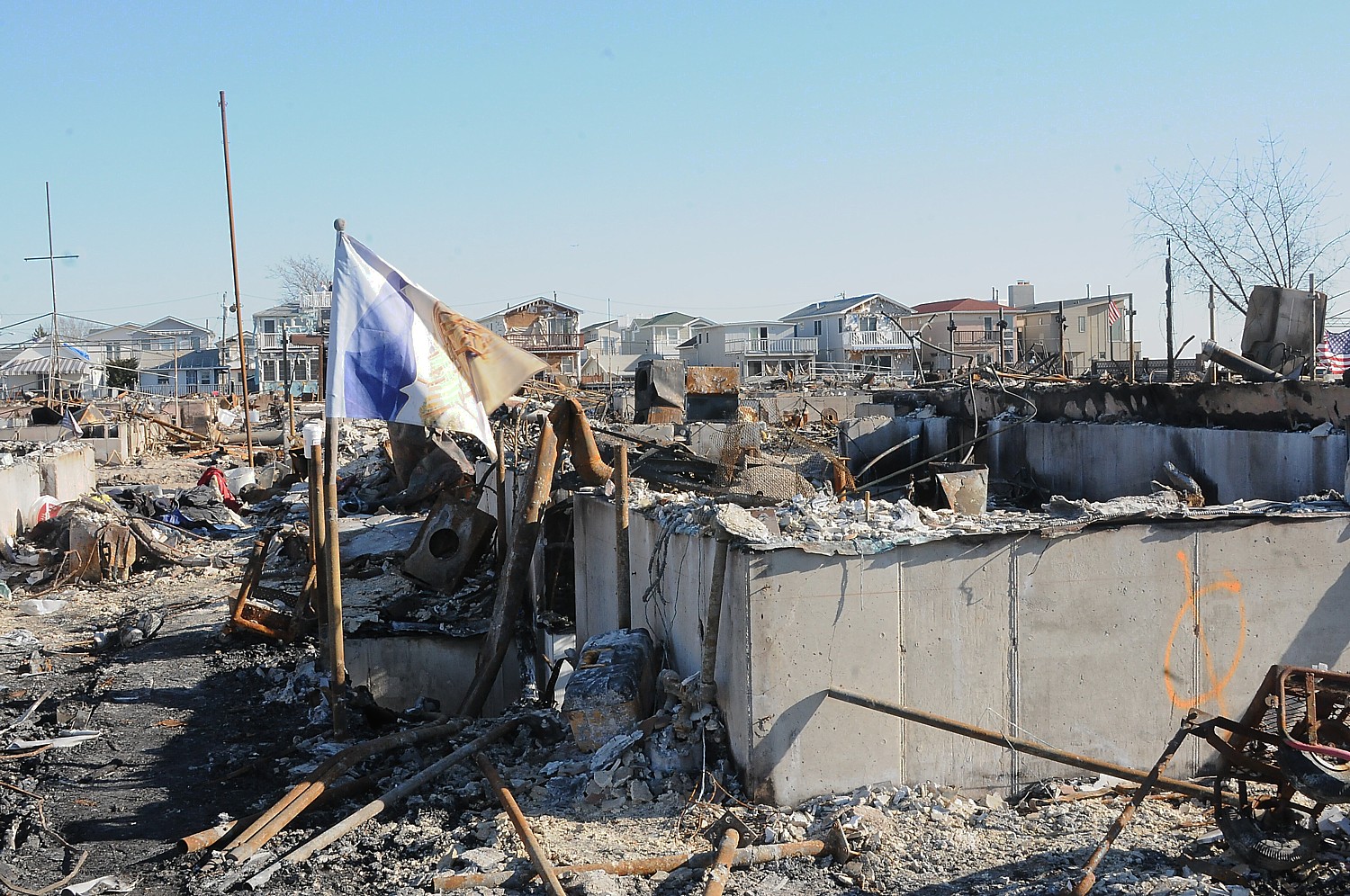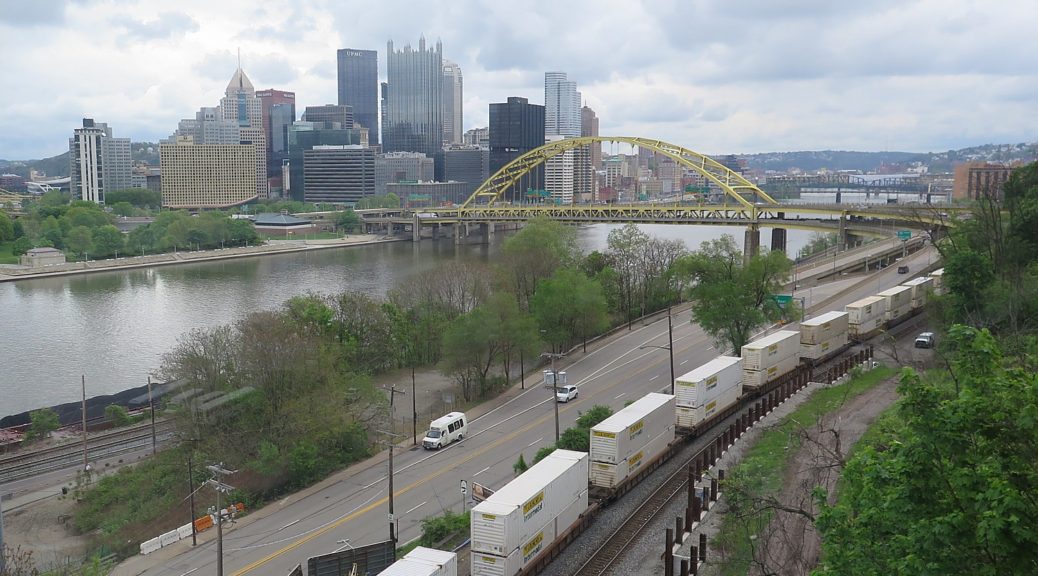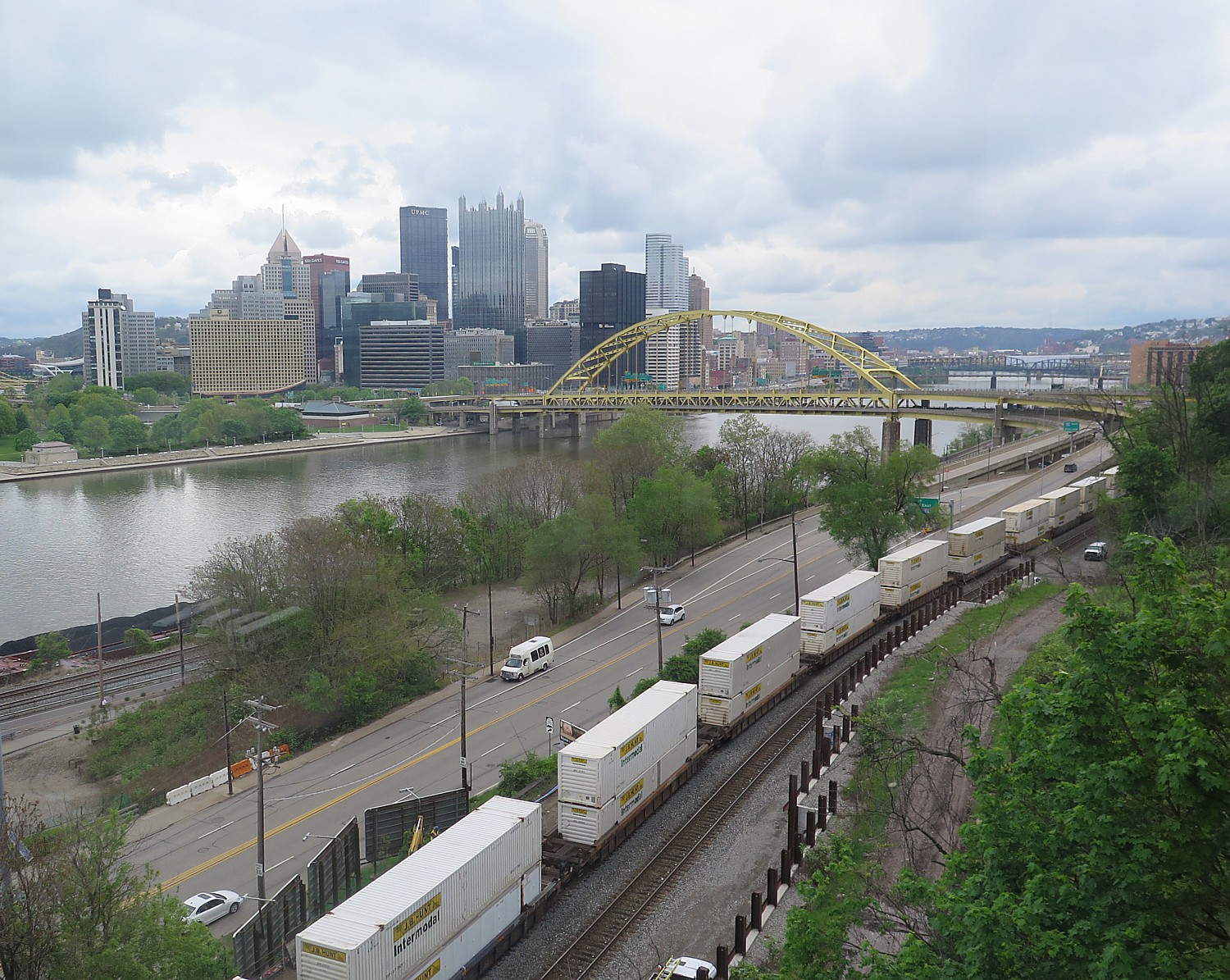
This is what a progressive state looks like.
New York State Governor Andrew M. Cuomo used his 2019 State of the State Address to delineate a Justice Agenda that works toward the ideal of full, true justice for all.
In stark contrast to the federal government’s dysfunction and the self-destructive tactic of using the shutdown to extort a political prop, the Governor is laying out a blueprint to move forward, while shielding New Yorkers from Washington’s devastating federal attacks. It is aimed at strengthening the middle class, safeguards the environment, improves the health of communities and invests in building an infrastructure for the 21st century. For the ninth consecutive year, the Budget is balanced and holds spending growth below two percent.
“In December, in the face of the nation’s biggest social crisis, and with the federal government seeking to undo generations of progress, Governor Cuomo laid out his legislative agenda to enable the Legislature to commence action on these top priorities immediately upon convening.” In this State of the State Address, the Governor called on the Legislature to swiftly and immediately act on these priorities in the first 100 days of session.
“In the face of unprecedented challenges on a national level and a federal government at a complete standstill, New York will deliver on the most productive agenda in our history and build on our record of accomplishments,” Governor Cuomo said. “This is a true Justice Agenda that ensures our neediest schools receive an equitable share of funds, advances historic criminal justice reform, safeguards our health care, protects the rights of women in our state from the federal government, and leads the nation in fight against climate change and contaminants in our environment and our water. While extreme conservatives in Washington govern by division and fuel dysfunction, New York State will raise the beacon of progress and take action to make a real difference in people’s lives.”
Here is a summary of the initiatives (it is long, but New Yorkers should see the detail of the agenda):
- The FY 2020 Executive Budget is $175.2 billion on an All Funds basis.
- State Operating Funds is $102.0 billion, growth of 1.9%
- Health and Education spending grows at 3.6%, Executive Agencies at 0.8%.
ECONOMIC JUSTICE
Continue the Phase-In of Middle Class Tax Cuts: The Budget supports
the phase-in of the middle class tax cuts. Under these reforms, rates will
continue to drop to 5.5 percent and 6 percent when the cuts are fully phased in
– an up to 20 percent cut in income tax rates for the middle class – and
produce a projected $4.2 billion in annual savings for six million filers by
2025. As the new rates phase in, they will be the State’s lowest middle-class
tax rates in more than 70 years.
Extend the Millionaire’s Tax: To protect the progress that has been
made in enhancing progressivity and ensuring tax fairness for New York’s
middle-class, Governor Cuomo is proposing a five-year extension of the current
tax rate on millionaires. This will preserve an estimated $4.4 billion annually
otherwise unavailable to make vital investments in education and infrastructure
to secure New York’s future economic prosperity.
Make Permanent the Property Tax Cap: Governor Cuomo made a
first-ever property tax cap a hallmark of his first campaign for Governor and a
priority of his administration’s first year. Since the implementation of the
tax cap in 2012, growth has averaged approximately 2 percent and the tax cap
has produced approximately $25 billion in taxpayers’ savings. The Governor
proposes that New York preserve and make permanent the property tax cap, as he
has advocated in the past.
Close the Carried Interest Loophole: Because of an egregious
loophole in federal law, some of the wealthiest people in the country,
including hedge fund managers and private equity investors, are paying lower
tax rates on their income than many middle class families. This “carried
interest” loophole results in a substantial cost to middle-class New
Yorkers, with the State losing about $100 million every year. To ensure that
the wealthiest Americans are paying their fair share, Governor Cuomo will take
a landmark step to close the carried interest loophole under New York State law
and effectively eliminate the benefits of this loophole under the federal tax
code.
Fight for the Full Deductibility of State and Local Taxes: Governor
Cuomo fought the federal tax bill every step of the way while it was under
consideration in Congress. After its passage, New York joined together with
three other states to sue the federal government over this illegal and targeted
assault. The Governor will continue to fight against this law and the threat
that it poses to New York State, and he urges the new Democratic House of
Representations stand together and demand that the SALT deduction is fully
restored.
Continue Lawsuit Against Federal Government Challenging Unconstitutional Tax
Law That Targets New York: Governor Cuomo and Attorney General Barbara
D. Underwood filed a lawsuit to protect New York and its taxpayers from
Washington’s drastic curtailment of the SALT deduction. The lawsuit argues that
the new SALT cap was enacted to target New York and similarly situated states,
that it interferes with states’ rights to make their own fiscal decisions, and
that it will disproportionately harm taxpayers in these states. The Governor
and Attorney General Letitia James will continue in their fight to overturn the
law’s unprecedented and unconstitutional limitations on SALT deductibility.
Building 21st Century Infrastructure
Invest an Additional $150 Billion in the Nation’s Largest Infrastructure
Program: Governor Cuomo has made an unprecedented commitment to invest
$150 billion in infrastructure projects over the next five years. Beginning in
FY 2020, these capital projects will rebuild transportation and mass transit
systems, drive economic and community development, create new environmental and
park facilities, and support our sustainable energy future.
Reduce Traffic Congestion in NYC and Fund the MTA: This year, the
Governor will implement congestion pricing to establish a reliable funding
stream to transform the transit system and reduce congestion in Manhattan. By
charging fees for vehicles to move within the most congested area of New York
City and then reinvesting those funds into transit improvements, this plan will
combat gridlock and deliver to New York City’s residents and visitors the
world-class transit system they deserve.
Establish Accountability for the MTA: The MTA is a bureaucracy that
lacks any accountability. The board of 17 members gives no single person a
clear majority of nominees and there are 32 unions representing MTA employees
that exert significant political power over the elected officials who appoint
the board members. To overhaul this bureaucracy and fix the system, the
Governor will work with the Legislature to establish clear authority over the
MTA, while continuing to solve the need for dedicated funding and splitting
capital funding shortfalls between New York City and New York State. Only with
clearly designated authority and adequate funding can the MTA can be overhauled
into the efficient and effective transit system that New Yorkers deserve.
Expand Design-Build and Enact Other Efficiencies to Expedite Construction
Projects: Governor Cuomo’s $100 billion infrastructure program is arguably
the nation’s largest and boldest. Key to the program’s success is the
Governor’s decision to deploy the design-build method on complex projects, saving
taxpayers time and money by making a single contractor responsible for both a
project’s design and its actual construction. To ensure efficiency across State
projects, the Executive Budget includes legislation authorizing the use of
state-of-the-art methods such as construction manager at-risk and construction
manager-build, while expanding design-build to additional agencies.
Continuing New York’s Bottom-Up Economic Development Strategy
Invest $750 million for Round Nine of the Regional Economic Development
Councils: In 2011, Governor Cuomo established 10 Regional Economic
Development Councils (REDCs) to develop long-term regional strategic economic
development plans. Since then, the REDCs have awarded $6.1 billion to more than
7,300 projects. This strategy has resulted in 230,000 new or retained jobs in
New York. The Executive Budget includes core capital and tax-credit funding
that will be combined with a wide range of existing agency programs for a ninth
round of REDC awards totaling $750 million.
Invest in Communities Across the State Through the Fourth Downtown
Revitalization Initiative: The Downtown Revitalization Initiative is
transforming downtown neighborhoods into vibrant communities where the next
generation of New Yorkers will want to live, work and raise families.
Participating communities are nominated by the State’s ten REDCs based on the
downtown’s potential for transformation. Through three rounds of awards, each
winning community was awarded $10 million to develop a downtown strategic
investment plan and implement key catalytic projects that advance the
community’s vision for revitalization. The Executive Budget provides $100
million for the Downtown Revitalization Program Round IV.
Ensuring A Quality Education for All
Require Districts to Distribute State Aid in a More Equitable Manner to
Their Neediest Schools: Although the state distributes 70 percent of
its funding to the neediest districts, the districts do not always distribute
funding to their schools in an equitable manner. In fact, some school districts
have schools with significantly higher needs receiving less than the average
school in the district. Governor Cuomo proposes to require that these school
districts devote a portion of their 2019-20 school aid to increase the
per-pupil allocation in those high-need schools. This increase in allocation
will help ensure that funding intended to help improve educational outcomes for
the neediest students reaches those students.
$1 Billion Education Aid Increase: State support for school
districts will have increased by $8.1 billion (42 percent) since FY 2012. Over
70 percent of this year’s increase goes to high-need school districts.
Foundation Aid is increased by $338 million.
Expand Universal Pre-Kindergarten: The Budget includes an
additional $15 million investment in pre-kindergarten to expand high-quality
half-day and full-day prekindergarten instruction for three- and four-year-old
children in high-need school districts.
Recruit 250 New Teachers in Shortage Areas through the We Teach NY
Program: With the goals of diversifying and strengthening the teacher
workforce pipeline, Governor Cuomo proposes to invest $3 million in the We
Teach NY program, which will strategically recruit 250 new teachers to fill
identified needed positions in New York classrooms in 2024.
Expand Master Teacher to High Poverty Schools to Increase Access to Advanced
Courses: In 2013, Governor Cuomo launched the New York State Master
Teacher Program to strengthen our nation’s STEM education, giving selected
educators an annual $15,000 stipend for four years, professional development
opportunities and a platform to foster a supportive environment for the next
generation of STEM teachers. In order to recruit and retain outstanding
educators in the highest poverty schools, the Executive Budget will provide
$1.5 million to support 100 new Master Teachers who teach in high-poverty
schools with high rates of teacher turnover or high rates of relatively
inexperienced teachers.
Protect Student Loan Borrowers: There are approximately 2.8 million
student loan borrowers in New York that have tens of billions of dollars in
outstanding student loan debt, which is serviced by about 30 student loan
servicers. The Governor will advance sweeping protections for student loan
borrowers by requiring that companies servicing student loans held by New
Yorkers obtain a state license and meet standards consistent with the laws and
regulations governing other significant lending products such as mortgages;
banning upfront fees; requiring fair contracts and clear and conspicuous
disclosures to borrowers; and providing penalties for failing to comply with
the law.
Creating Economic Opportunity for Every New Yorker
Launch the $175 Million Workforce Initiative: Governor Cuomo will launch a new Consolidated Funding Application for workforce investments that will support strategic regional efforts that meet businesses’ short-term workforce needs, improve regional talent pipelines, expand apprenticeships, and address the long-term needs of growing industries — with a particular focus on emerging fields with growing demand for jobs like clean energy, health technology, and computer science. These funds will also support efforts to improve the economic security of women, youth, and other populations that face significant barriers to career advancement.
Expand Employer-Driven Training Opportunities by Enhancing the Employee Training Incentive Program: Governor Cuomo proposes to expand the Employee Training Incentive Program to provide more training options to more industries by enabling employers with dedicated training shops to draw on in-house expertise in delivering approved training, and by extending ETIP tax credits to internship opportunities in additional high-tech industries.
Protect Workers from Union-Busting Activity by Codifying EO 183 into Law and Expanding its Protections to Local Governments: New York State has a long and distinguished history of standing by union workers. This year, Governor Cuomo will continue to advance his support for unions by introducing legislation that not only codifies EO 183 into law, but expands its protections to local governments to ensure that more union workers are protected.
Increase Criminal Penalties for Wage Theft: Governor Cuomo will advance legislation to increase criminal penalties for employers who knowingly or intentionally commit wage theft violations to more closely align with other forms of theft.
Ensuring Access to Affordable Housing
Enact Historic Legislation to Strengthen Rent Regulation: This year, the Governor proposes aggressive rent regulation reforms, including ending vacancy decontrol, repealing preferential rent, and limiting building and apartment improvement charges. These changes will preserve the rent regulated housing stock, strengthen tenants’ rights to affordable housing, and ensure New Yorkers safe, quality affordable housing.
Limit Security Deposits to Reduce Housing Barriers: Governor Cuomo will propose legislation to limit security deposits to a maximum of one month’s rent across New York State, making New York’s security deposit limits among the strongest in the nation This law will serve to ensure that burdensome security deposits will no longer serve as a barrier to entry for anyone trying to find a new place to live.
Help Families Build Credit and Holistically Evaluate Credit Scores: In New York State, most landlords conduct background credit checks on potential tenants, which often leads to rejecting applicants with low credit scores or an insufficient credit history. To ensure all New Yorkers have a fair shot of accessing affordable, quality housing, Governor Cuomo will issue regulations prohibiting state-funded housing operators from automatically turning away applicants with poor credit or histories of bankruptcy. Instead, the State will require that all potential tenants and homeowners be holistically evaluated to determine the circumstances behind their credit history and their ability to pay rent on a forward-looking basis.
Enact Source of Income
Protections to Support Fair Housing for All: In certain parts of New York State, landlords
can reject applicants based on their lawful source of income,
disproportionately impacting households that rely on non-wage income or income
assistance and those who use vouchers to obtain housing for their families. The
Governor will work with the legislature to amend the New York State Human
Rights Law to prohibit discrimination based on lawful source of income statewide
to ensure that such lawful income is not a blanket barrier to housing, reducing
financial instability for New York’s most economically vulnerable individuals.
Combating Poverty
Support ESPRI Communities and Establish ESPRI Representation on REDC
Workforce Development Committees: In 2016, Governor Cuomo
created the Empire State Poverty Reduction Initiative (ESPRI) to combat poverty
and reduce inequality. ESPRI is an important component of the Governor’s
anti-poverty agenda, and this year Governor Cuomo proposes to build on the
success of these State and local partnerships to address poverty, supporting
more community-based efforts through continued funding of ESPRI. Governor Cuomo
will also continue to support efforts by the REDCs and the economic development
community to broaden and deepen their commitments to local anti-poverty efforts
and he will ensure an ESPRI representative is included on each region’s
Workforce Development Committee and involved in the review process for the
Governor’s new Workforce Development Initiative.
Reduce Hunger and Food Insecurity: Building on historic investments
to combat food insecurity, Governor Cuomo will establish a goal to reduce
household food insecurity in New York State by 10 percent by 2024. In order to
achieve this goal, Governor Cuomo is directing the following actions: create a
food and anti-hunger policy coordinator; simplify access to SNAP for older and
disabled adults; enhanced resources and referrals in clinical settings;
participate in SNAP online purchasing pilot; and expand food access in Central
Brooklyn.
Supporting the Rural and Agricultural Economy
Continue the Revitalization of the Great New York State Fairgrounds: The
State Fair drives $100 million a year in economic activity in Central New York
and thousands of jobs. Under Governor Cuomo’s leadership, New York State has
invested more than $120 million dollars in two phases over the last three years
to remake the New York State Fairgrounds. To continue the transformation of the
State Fairgrounds, the State will make additional renovations and upgrades to
enhance user experience. The Governor’s commitment continues to make the
fairgrounds a year-round destination.
Fund Key Programs to Support New York’s Farmers: The agricultural
industry is full of variability and uncertainty. As a reflection of the
Governor’s resolve to support New York’s farmers, this year’s Executive Budget
will continue funding the specialized technical assistance, industry promotion,
and research investments statewide to reduce farms’ exposure to economic and
climate inconsistency.
SOCIAL JUSTICE
Advancing Criminal Justice for All
Bail and Pretrial Detention Reform: Governor Cuomo is advancing
legislation that will end cash bail once and for all, significantly reduce the
number of people held in jail pretrial, and ensure due process for anyone
awaiting trial behind bars. This series of reforms will include a mandate that
police issue appearance tickets instead of making arrests in low-level cases,
eliminate money as a means of determining freedom, and institute a new
procedure whereby a district attorney can move for a hearing to determine
whether eligible defendants may be held in jail pretrial, for which the judge
must find reasonable cause to believe the individual is a danger to themselves
or others.
Improve Transparency in the Discovery Process: As only one of ten states
where prosecutors can withhold basic evidence until the day a trial begins,
Governor Cuomo’s plan will bring New York’s discovery process into the 21st
century by requiring both prosecutors and defendants to share all information
in their possession well in advance of trial. Defendants will also be
allowed the opportunity to review whatever evidence is in the prosecution’s
possession prior to pleading guilty to a crime.
Ensure the Right to a Speedy Trial: Governor Cuomo will introduce
legislation that ensures criminal cases no longer drag on without
accountability. With this proposal, Governor Cuomo will guarantee that all
necessary discovery procedures are completed quickly, and that no New Yorker is
unduly held in custody as they await their day in court.
Abolish the Death Penalty: Although the New York Court of Appeals ruled
the death penalty unconstitutional in 2004, capital punishment was never fully
repealed in statute. To address this disparity, Governor Cuomo will
introduce legislation to permanently strike capital punishment from the law to
guarantee that this draconian punishment is never again practiced in the State
of New York.
Transform the Use of Solitary Confinement in State Prisons: New
York has dramatically reformed and reduced the use of solitary confinement for
people who engage in misconduct within state prisons. The Governor is directing
DOCCS to accelerate the momentum of solitary confinement reform by limiting the
length of time spent in separation, building dedicated housing units for
rehabilitation and integration following a disciplinary sanction, and expanding
therapeutic programming to reinforce positive and social behavior.
Establish Compassionate Release: The Governor will establish a
process of compassionate release for incarcerated individuals over the age of
55 who have incapacitating medical conditions exacerbated by their age.
Enact a Comprehensive Re-entry Package to Improve Outcomes for Formerly
Incarcerated Individuals: Governor Cuomo will enact a four-point plan
to ease the burdens placed on individuals who have paid their debt to society
and provide them with the opportunities they need to succeed.
Legalizing Adult Use Cannabis
In January 2018, Governor Cuomo directed the Department of Health to launch a
multi-agency study to review the potential impact of regulated cannabis in New
York. The study, issued last July, concluded that the positive impact of a
regulated cannabis program in New York State outweighs the potential negative
aspects. Building on extensive outreach and research, Governor Cuomo is
proposing the establishment of a regulated cannabis program for adults 21 and
over in the FY 2020 budget that protects public health, provides consumer
protection, ensures public safety, addresses social justice concerns, and
invests tax revenue. Specifically, the program will:
- Reduce impacts of criminalization affecting communities of color.
- Automatically seal certain cannabis-related criminal records.
- Implement quality control and consumer protections to safeguard public health.
- Counties and large cities can opt out.
- Restrict access to anyone under 21.
- Generate approximately $300 million in tax revenue and create jobs.
Advancing Reproductive Justice and Women’s Equality
Pass the Reproductive Health Act and Comprehensive Contraceptive Coverage Act and Enshrine Roe v. Wade into the New York State Constitution: Governor Cuomo will work with the legislature to pass the Reproductive Health Act within the first 30 days of the 2019 Legislative Session, codifying the principles of Roe v. Wade into State law. This law will ensure the right of people to make personal health care decisions to protect their health, in addition to their life, and ensure that health care professionals can provide these crucial services without fear of criminal penalty. Upon passage of the RHA, the Governor will advance a concurrent resolution to enshrine the principles of Roe v Wade into the New York State Constitution. Additionally, Governor Cuomo will advance legislation to codify affordable access to contraception, including emergency contraception, into New York State law, by passing the Comprehensive Contraceptive Coverage Act.
Improve Access to In-Vitro Fertilization and Fertility Preservation Coverage: This year, Governor Cuomo will advance legislation to expand access to coverage for IVF, as well as medically-necessary fertility preservation services. This legislation will specifically mandate that large group insurance providers cover IVF and will also require large, small, and individual group insurance providers to cover egg-freezing services for women with certain health conditions, including those undergoing cancer treatment.
Reduce Maternal Mortality and Morbidity and Racial Disparities: Based on recommendations from the Maternal Mortality Taskforce established by Governor Cuomo in 2018, the Governor will advance a series of policies to reduce maternal mortality and racial disparities in New York State, including creating an education and training program to reduce implicit racial bias in health care institutions statewide, expand Community Health Worker programs, enacting legislation to create a statewide Maternal Mortality Review Board, creating a data warehouse to provide near real-time information on maternal mortality and morbidity and to inform targeted quality initiatives, and convening an Expert Workgroup on Postpartum Care to develop recommendations targeting the critical time immediately after birth.
Pass the Equal Rights Amendment: Governor Cuomo will push to pass the Equal Rights Amendment to add sex as a protected class to Section 11 of Article 1 of the New York State Constitution. With this change, Section 11 of Article 1 of the New York State Constitution will read: No person shall be denied the equal protection of the laws of this State or any subdivision thereof. No person shall, because of race, color, sex, creed or religion, be subjected to any discrimination in his or her civil rights by any other person or by any firm, corporation or institution, or by the State or any agency or subdivision of the state.
Pass the Domestic Violence Survivors Justice Act: Governor Cuomo will advance the Domestic Violence Survivors Justice Act, which will build on Jenna’s Law to include more meaningful sentence reductions and encompass crimes committed not only against, but also at the behest of, abusers. The Act will also permit a small population of currently incarcerated survivors to apply for re-sentencing and earlier release due to their prior victimization.
Eliminate the Statute of Limitations for Rape: While New York removed the statute of limitations for Rape in the First Degree, a five-year statute of limitations remains for Rape in the Second Degree and Rape in the Third Degree. Therefore, in 2019 Governor Cuomo will advance legislation to remove the statute of limitations for Rape in the Second Degree and Third Degree.
Increase Protections Against Harassment in the Workplace: Building on the nation’s most comprehensive sexual harassment package signed into law by Governor Cuomo in 2018, Governor Cuomo will advance legislation to lower the high bar set for employees to hold employers accountable under the New York Human Rights Law for sexual harassment, protect employees’ rights to pursue complaints, and ensure workers know their rights, by requiring all employers to conspicuously post a sexual harassment educational poster in their workplace.
Modernize New York’s Pay Equity Law: Since taking office, Governor Cuomo has fought aggressively to close the gender pay gap in New York. This year, Governor Cuomo will build upon that effort by championing the passage of a salary history ban. In addition, the Governor will advance legislation to expand the definition of “equal pay for equal work” to require equal pay on the basis of race, ethnicity, gender, and other protected characteristics, and expand the requirement that equal pay be provided for all substantially similar work, adding flexibility in recognition of the complexity of the issue.
If You Can See It, You Can Be It 2019—Girls in Government: Governor Cuomo will create an opportunity for girls to learn about the impact they can have through politics through the new Girls in Government initiative, a non-partisan program to encourage girls in grades 8 through 12 to get involved in government and public policy. The program will introduce girls to the machinery of advocacy and public policy and teach young girls about public affairs and issues that matter to them personally and in their community. They will witness first-hand the inner workings of state government and meet with elected officials and senior staff.
Creating a Safer New York
Establish Extreme Risk Protection Orders to Save Lives: Governor Cuomo will continue to champion the Red Flag Bill, also known as the Extreme Risk Protection Order Bill, which would prevent individuals determined by a court to have the potential to cause themselves or others serious harm from purchasing, possessing, or attempting to purchase or possess any type of firearm, including handguns, rifles, or shotguns. This legislation builds on New York’s strongest-in-the-nation gun laws, and, if passed, would make New York the first state to empower its teachers and school administrators to prevent school shootings by pursuing court intervention.
Extend the Background Check Waiting Period: Governor Cuomo continues to support legislation to establish a 10-day waiting period for individuals who are not immediately approved to purchase a firearm through the National Instant Criminal Background Check System (NICS).
Ban Bump Stocks: Governor Cuomo will advance legislation to close existing statutory loopholes to prohibit ownership or sale of a bump stock. As evidenced by the 2017 Las Vegas shooting, bump stocks can be equipped to semi-automatic weapons to simulate machine gun fire with deadly consequences. Bump stocks serve no legitimate purposes for hunters or sportsmen and only cause unpredictable and accelerated gun fire, and there is no reason to allow for their continued sale in New York State.
Pass the Child Victims Act: Having advanced the Child Victims Act, Governor Cuomo is fighting to enact the bill and provide survivors with a long-overdue path to justice. This legislation will increase the length of time during which a child sex abuser may be held criminally accountable, allow abuse victims to commence a civil lawsuit at any time until they reach age 50, and ensure that each and every survivor has an opportunity to seek justice by creating a one-year window for victims whose claims have previously been time-barred to bring suit.
Enact Comprehensive
Safety Reforms for Large Passenger Vehicles: The horrific tragedies involving modified stretched
limousines in Schoharie County in 2018 and Suffolk County in 2015 filled every
New Yorker with a deep sense of empathy and sorrow for the victims and their
loved ones. Governor Cuomo proposes a number of statutory reforms to both
protect passengers and hold those accountable who seek to flout the law, including
an outright ban on the registration of remanufactured limousines, prohibiting
their operation in New York State.
Authorize Speed Cameras: In order to reinstate the bill signed into law
by Governor Cuomo in 2013 authorizing the City of New York to develop a system
to advance school zone highway safety utilizing camera technology to record and
enforce speeding violations, the Governor will put forward a proposal to
reinstate and expand the speed camera program in New York City.
Enacting the Democracy Agenda
Allow Universal Absentee Voting: Governor Cuomo will push to amend the
constitution to make absentee ballots available to any eligible voter, no
matter their reason for wanting one.
Enact Statewide Early Voting: This proposal would combine early voting
with electronic poll books, making make it easier for poll workers to keep
track of voting records and verify voter identity and registration
status.
Permit Same-Day Registration: Governor Cuomo is proposing amending the
constitution to eliminate this outdated but formidable barrier to the ballot
box.
Automatic Registration: Today New Yorkers are given the opportunity
to register to vote when interacting with State agencies and they must
affirmatively ask to be registered. The budget will include a proposal to
reverse that process and register eligible New Yorkers to vote unless they
affirmatively ask not to be registered. Automatic voter registration will not
only boost voter registration and turnout in this state, it will also strengthen
our democratic process.
Make It Easier to Register to Vote: In order to ensure voter
registration is as simple as possible, the Governor is proposing that all
automatic voter registration opportunities be available online, and that New
Yorkers are able to apply to register to vote on the State Board of Elections
website if they choose to do so.
Make Election Day a Holiday: An inability to take off of work
should never be a barrier to voting. For this reason, Governor Cuomo will
advance legislation to ensure that every worker in New York State receives, as
of right, paid time off to vote on Election Day.
Eliminate Restrictions on Voting Before Noon in Upstate Primaries:
Governor Cuomo will fix unequal ballot access across the state by ensuring that
voting hours are extended for primary elections upstate to match those voting
hours across the rest of the state.
Fight to Ensure that All New Yorkers Are Counted in the 2020 Census: In
2019, Governor Cuomo will launch a comprehensive campaign to protect the
integrity of the 2020 Census and to ensure that every New Yorker is counted.
Enacting Ethics Reform
Adopt Campaign Finance Reform: Governor Cuomo will advance a
comprehensive package of campaign finance reform legislation to combat the
unprecedented influence of big money in politics and empower the voices of all
New Yorkers.
- Public Financing of Elections: There is no incentive in today’s campaign finance system for candidates to focus on ordinary donors. Large donors provide large donations which drown out the voices of ordinary people. Public campaign financing is the remedy to this problem. By enacting a 6:1 public financing matching ratio for small donations, candidates will be incentivized to focus on small donors.
- Lowering Campaign Contribution Limits: Governor Cuomo is proposing lowering contribution limits for all candidates. By implementing these reforms, and creating a strong public financing system, New York will dramatically reduce the influence of money in politics and return to a government by the people and for the people.
- Ban Corporate Contributions and Fully Close the LLC Loophole: Ever since the Citizens United decision in 2010, corporate money has overtaken our elections system. It is time for New York State to finally say enough is enough. Governor Cuomo will fix this problem once and for all by banning all corporate and LLC contributions. It is time to restore the power to the people, and take it out of the hands of dark money and special interest donors.
- Strengthen Disclosure Laws that Expose Dark Money in Politics : In June 2016, Governor Cuomo advanced ethics reform legislation to address the impact of Citizens United v. Federal Election Commission, 558 U.S. 310 (2010). The Governor cautioned about the increase of dark money in politics and promised to “strengthen disclosure requirements and mandate that groups report the identity of anyone exerting control over them.” In August 2016, the Governor signed into law New York Executive Law § 172, which requires disclosures of political relationships and behaviors widely recognized to be influential but which operate in the shadows. Now, with the lessons of the 2018 election in hand, the Governor proposes strengthening this law in a variety of ways to assure all New Yorkers have critical information about who is actually speaking to them. Further, the Governor is seeking to streamline the reporting process for 501(c)(3) and 501(c)(4) organizations, including by providing a mechanism for organizations to apply for a statutory exemption before the start of a reporting period.
Require Financial
Disclosures by Local Elected Officials: This proposal will require these local elected officials to
submit basic financial disclosure information to JCOPE, just like their state
counterparts, so that the people of New York State can have the information
they need about the people they choose to represent them at all levels of
government.
Build a Dynamic, User-Friendly Database of Economic Development Projects: In
an effort to increase transparency and modernize the information available on
State economic development efforts, the Governor is directing Empire State
Development (ESD) to build and host a searchable online database that will give
the public more current and relevant information on projects that receive ESD
assistance. When deployed, the new database will provide the public with more
recent information on projects and combine the data from many static,
program-specific reports into one dynamic, user-friendly website.
Ensuring Immigrant Rights
Pass the Jose Peralta DREAM Act: Governor Cuomo will pass the Senator
Jose R. Peralta DREAM Act to finally open the doors of higher education to
thousands of New Yorkers. The Senator Jose R. Peralta DREAM Act will give
undocumented New York students, who are deserving of the same advantages given
to their citizen peers, access to the Tuition Assistance Program, as well as
state administered scholarships.
Codify Executive Order Prohibiting State Agencies from Inquiring About
Immigration Status: In 2017, Governor Cuomo issued Executive Order 170,
prohibiting State agencies and officers from inquiring about or disclosing an
individual’s immigration status unless required by law or necessary to
determine eligibility for a benefit or service. Building upon further
amendments to the Executive Order, Governor Cuomo proposes codifying the
protection of the amended EO 170 into law.
Protecting LGBTQ Rights
Pass the Gender Identity and Expression Non-Discrimination Act:Governor
Cuomo supports the passage of the Gender Expression Non-Discrimination Act
(GENDA), solidifying protections against discrimination, harassment, and hate
crimes against people on the basis of gender identity.
Banning Conversion Therapy: Governor Cuomo supports legislation to
expand the definition of professional misconduct for professions licensed under
the education law to include engaging in, advertising for, or allowing someone
under one’s direction or oversight to engage in conversion therapy with a
patient under the age of eighteen years.
Ban the “Gay Panic” Defense: Governor Cuomo will again
push to close the loophole in New York State by passing legislation to ban gay
and trans panic defenses.
Make Surrogacy Legal in New York State: New York State law
presently bans the practice of gestational surrogacy, and creates destabilizing
uncertainty about who the legal parents are when a child is conceived via other
reproductive technology like artificial insemination or egg donation. The
Governor is proposing legislation to lift the ban on surrogacy contracts to
permit gestational carrier agreements.
Serving Our Veterans
Support for Transgender Troops: New York will stand with all
veterans regardless of sexual orientation or gender identity. This year, all
New York State Division of Veterans’ Affairs staff will receive LGBTQ cultural
competency training to help understand how to best serve LGBTQ veterans. DVA
will also work with LGBTQ-focused organizations to make sure that each and
every LGBTQ veteran receives individualized assistance in a safe and supportive
environment, including by helping LGBTQ veterans upgrade their service
discharges so that these brave veterans will be able to access healthcare,
education, financial compensation, and other benefits they have earned.
JUSTICE FOR ALL NEW YORKERS
Protecting Quality, Affordable Health Care
Codify Health Care Protections and Coverage Guarantees for New
Yorkers: In light of the continued federal attacks on the ACA,
Governor Cuomo believes it is essential that New York codify key ACA
provisions, including the state’s health insurance marketplace, as well as
enhanced State regulatory protections into State law. This is critical to
stabilizing the health insurance market and inoculating New York from any
further federal attacks on the health care system.
Take Action to Achieve Universal Access to Health Care: Governor
Cuomo is establishing a Commission on universal health care to be supported by
Department of Health and Department of Financial Services, and comprised of
health policy and insurance experts to develop options for achieving universal
access to high-quality, affordable health care in New York. This review process
will consider all options for expanding access to care, including strengthening
New York’s commercial insurance market, expanding programs to include
populations that are currently ineligible or cannot afford coverage, as well as
innovative reimbursement models to improve efficiency and generate savings to
support expanded coverage.
Fighting to End the Opioid Epidemic
Protect New Yorkers from Predatory Practices: Governor Cuomo will
advance legislation to 1) require that out-of-state facilities be licensed in
their home state and accredited by a nationally recognized organization, and 2)
prevent predatory out-of-state providers from targeting justice involved
individuals by working with courts to immediately connect individuals to
in-state treatment programs and by advancing legislation to protect in-state
court ordered treatment. He will also direct OASAS to implement regulations
that require out-of-state marketers comply with OASAS requirements when
marketing in New York State. With these actions, New York will implement the
strongest practices in the nation to protect its residents, forcing predatory
treatment programs to look elsewhere to fill their facility quotas.
Expand Access to Buprenorphine: Buprenorphine is an important
advance in Medication Assisted Treatment, which, like methadone and injectable
naltrexone, is used in combination with counseling as appropriate to help
people reach and sustain recovery from Opioid Use Disorder. To expand use of
buprenorphine, Governor Cuomo will direct the Department of Health to require
all hospitals statewide to develop protocols for their Emergency Departments to
address Opioid Use Disorder based on the standard of care for treatment or
referral for treatment.
Expand Access to Medication Assisted Treatment in Criminal Justice Settings: To
expand access to treatment in prisons and jails, Governor Cuomo has directed
OASAS to distribute over $4 million to support addiction treatment services in
over 50 facilities. Additionally, Governor Cuomo will expand access to
Medication Assisted Treatment by providing $1.2 million to support the
establishment of up to three new MAT programs in State prisons.
Increase Access to Naloxone: Governor Cuomo will direct DOH to
advance legislation that expands Good Samaritan laws to apply to workers in
restaurants, bars, and other retail establishments. In addition, Governor Cuomo
will increase access to naloxone at SUNY and CUNY by ensuring that naloxone is
provided as part of every dorm first aid kit, or available for the Resident
Assistant on duty every night in every SUNY and CUNY dorm.
Launch a Comprehensive Substance Use Prevention Blueprint for Schools: At
Governor Cuomo’s direction, New York State will launch a statewide
collaborative to streamline all prevention resources and develop best
practices, standards, and metrics for substance use prevention into a focused
“Prevention Blueprint” that will assist schools to follow a
comprehensive, evidence-based and data-driven approach to prevention. OASAS
shall work in collaboration with the State Education Department, Department of
Health and the Office of Mental Health to develop the Prevention Blueprint for
use in the 2020-21 school year.
Creating Healthy Communities
Protect New Yorkers from Unknown Exposure to Toxic Chemicals: Governor
Cuomo will introduce new legislation authorizing the Department of
Environmental Conservation, the Department of Health and the Department of
State to develop regulations establishing an on-package labeling requirement
for designated products, indicating the presence of potentially hazardous
chemicals, developing a list of the more than 1,000 carcinogens and other
chemicals that will trigger labeling, and identifying the types of consumer
products that will be subject to the new regime. DEC and DOH will be further
empowered to require manufacturers to disclose the chemical contents of
consumer products in sold or distributed in New York State and explore possible
additional measures to protect consumers.
Control Health Threats from Tobacco: Governor Cuomo is proposing
comprehensive legislation to combat the rising use of tobacco products. This
legislation includes:
- Raising the Minimum Sales Age for Tobacco and Electronic Cigarette Products from 18 to 21: Most underage youth obtain tobacco and vapor products from friends who are over 18 and can legally purchase products. Raising the minimum age will remove sources of tobacco from high schools.
- Ending the Sale of Tobacco and Electronic Cigarette Products in Pharmacies: Health care related entities should not be in the business of selling tobacco, the leading cause of preventable death in New York State. Ending the sale of tobacco and electronic cigarette products in pharmacies will reduce the availability, visibility, and social acceptability of tobacco use, especially to youth.
- Clarify the Department of Health’s Authority to Ban the Sale of Certain Flavored E-Cigarette Liquids: Flavored combustible cigarettes, except menthol, were banned by the FDA in 2009 to reduce youth smoking as they were frequently used as a starter product. Most e-cigarette users said their first e-cigarette was flavored. Flavors, such as sweet tart, toffee, and bubble gum, make e-cigarettes more attractive and make e-cigarettes more attractive to youth. Legislation is being introduced to provide the Department of Health the authority to ban the sale of flavored liquids that target youth use of e-cigarettes.
- Restricting Available Discounts Provided by Tobacco and Electronic Cigarette Manufacturers and Retailers: New York has the highest cigarette tax in the nation, but manufacturers and retailers have developed tactics to reduce prices, such as “buy one, get one free” discounts. These tactics directly target price-sensitive consumers, including youth. Restricting discounts on tobacco and vapor products will strengthen the impact of New York’s tax on tobacco and disincentivize tobacco use.
- Introduce a Tax on E-Cigarettes: Tobacco use is reduced or prevented when the price of tobacco products is high. Youth are particularly sensitive to price increases on tobacco products. New York State has one of the highest taxes on combustible cigarettes and one of the lowest youth smoking rates in the country. The same rationale is expected to apply to taxation and youth use of electronic cigarettes and e-liquids.
- Require E-Cigarettes to Be Sold Only Through Licensed Retailers: Currently the sale of e-cigarettes is almost entirely unregulated. Restricting the sale to licensed retailers will allow the current enforcement infrastructure to ensure that minors do not purchase tobacco products.
Invest in Community-Based Supports for Aging New Yorkers: Governor Cuomo proposes investing $15 million in community-based supports for aging New Yorkers. This needed targeted investment in NYSOFA’s programs and services will help serve more older adults and will help them maintain their autonomy, support family and friends in their caregiving roles, and delay future Medicaid costs. Working with the Department of Health, NYSOFA will develop specific metrics to evaluate the success of this investment.
Create the Family First Transition Fund: The state will leverage the investment of private foundation funding to create a Family First Transition fund that will provide resources to local departments of social services and foster care agencies to have the resources needed to prepare for the implementation of the Family First federal legislation. This investment will allow New York State to adequately prepare for the implementation of Family First and will position New York to continue to prioritize the needs of its most vulnerable children and families and ensure the local departments of social services are fully equipped to meet those needs while maintaining compliance with important federal benchmarks.
Continuing New York’s Environmental Leadership
Launching the Green New Deal: Amidst the Trump Administration’s assault on the environment and in order to continue New York’s progress in the fight against climate change, Governor Cuomo is announcing New York’s Green New Deal, a nation-leading clean energy and jobs agenda that will put the state on a path to carbon neutrality across all sectors of New York’s economy. At the Governor’s direction, New York will move boldly to achieve this goal with specific near-term actions and long-term strategies to spur unparalleled innovation and transform the state’s electric, transportation, and building infrastructure while prioritizing the needs of low- and moderate-income New Yorkers. This landmark initiative will further drive the growth of New York’s clean energy economy, create tens of thousands of high-quality 21st century jobs, provide all New Yorkers with cleaner air and water by reducing harmful emissions, and set an example of climate leadership for the rest of the nation and world to follow.
Establish $10 Billion Green Future Fund: This year, Governor Cuomo will advance a $10 billion Green Future Fund to support clean water infrastructure, renewable energy and clean transportation, and open space and resiliency. This fund includes $5 billion in total for drinking water and wastewater infrastructure—building upon the $2.5 billion Clean Water Infrastructure Act and effectively doubling the state’s investment in clean water over the next five years.
Continue Historic $300 Million Environmental Protection Fund: Governor Cuomo proposes maintaining the State’s historic $300 million EPF. This investment will prioritize programs to protect New York’s water bodies, promote stewardship projects in parks and on other state lands, revitalize municipal waterfronts, and build community resilience to climate change—all while creating jobs and stimulating local economies.
Expanding the Bottle Bill to Include Most Nonalcoholic Drinks: In order to reduce litter and provide relief to overburdened municipal recycling entities who are struggling amidst changes to the global recycling markets, Governor Cuomo will expand the Bottle Bill to make most non-alcoholic beverage containers eligible for 5 cent redemption, including those for sports drinks, energy drinks, fruit and vegetable beverages and ready-to-drink teas and coffee.
Prohibiting the Use of Plastic Bags: To address the environmental impacts of single-use plastic bags, Governor Cuomo proposes a statewide plastic bag prohibition with certain exceptions.
2019 State of the State Book Available Here




